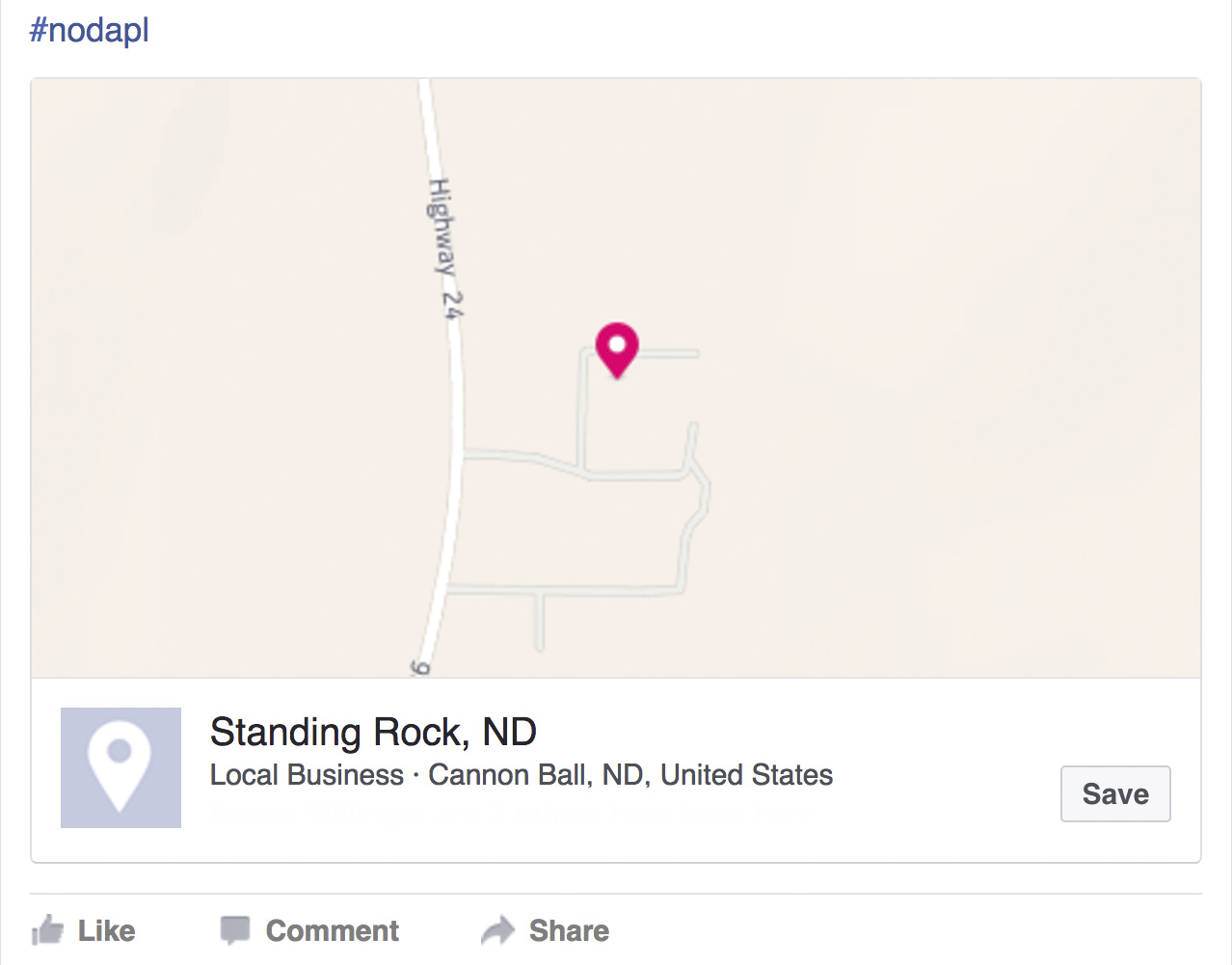On Monday, October 31st, those of us on social media witnessed friend after Facebook friend check in at Standing Rock, located on Standing Rock Sioux territory. You may have checked in yourself — I know I did. You may have even hit that Google search bar and read a few articles about the continued struggle of the Standing Rock Sioux Tribe and allied nations in defense of their land and waters.
And then, if you were like me, you went back to your essay, shut your laptop to go grab coffee and continued on with the day as usual. So what impact did we leave clicking the check-in button? Was it another instance of simple ‘clicktivism’? Another virtual bandwagon to hop on with very little actual risk or even effort?
Of course it was.
In just a few clicks we had checked-in, added our virtual presence to over a million other Facebook users in an attempt to confuse the Morton County Sheriff’s Department (which has allegedly used Facebook’s check-in feature to target protesters). However, a recent CBC article explained that not only is this action superficial, but ultimately ineffective, as surveillance and police departments have extensive software such as geo-fencing which easily circumvents the check-in flood. In short, the check-in had no concrete effect on the surveillance or protection of protesters.
However, that does not mean the check-in was without effect.
The check-in was not useless, but neither was it useful. It was peripheral.
As the #NoDAPL struggle continues, moments like Monday’s check-in wave are just that — moments. Significant in their expression of solidarity, but not representative of the ongoing risks and efforts of those on the front lines. Similar to the arrest of Shailene Woodley and other celebrity endorsements, this moment is a hypervisible, and ultimately ineffective snapshot of Indigenous resistance, a resistance that spans centuries. In a simple click, we were “standing” in Standing Rock Sioux Reservation, not physically but virtually entering a space where Indigenous bodies, stories, and lives stand between their land and a pipeline.
So let’s be clear — we did the right thing, not as allies, not as activists, but as Facebook users, as participants in a media trend demonstrating solidarity. But this is not a game changer. The Facebook outbreak of check-ins we saw Monday was not part of the protest, it was a response. This was not a stand with Standing Rock against geo/spatial colonial extortion of traditional territory, it was a simple ask and answer, call-to-action by way of witness.
When asked to click a few buttons on Facebook, a small but concrete expression of solidarity for the protection of those on the front lines, we responded in droves.
But our response was momentary, an 8-bit drop in an ocean of pixels. We may have encouraged, we may have shocked, we may have been to Standing Rock, but we haven’t seen it. We haven’t felt it. We haven’t lived it. And we certainly haven’t protected it.
The author and the McGill Daily encourage readers to go online to sacredstonecamp.org/supply-list/ to find out about more ways in which they could support water protecters and activists on the ground.

